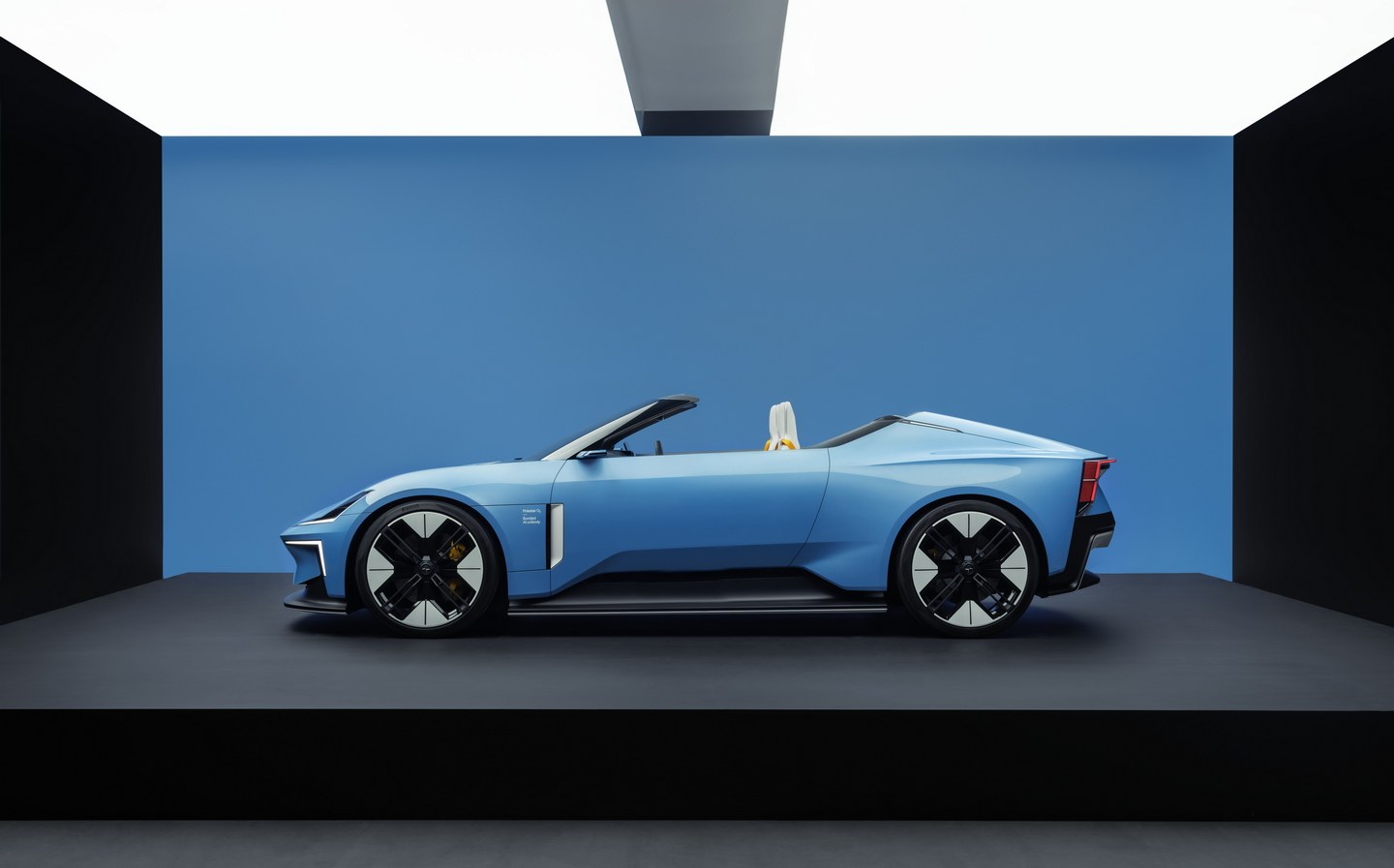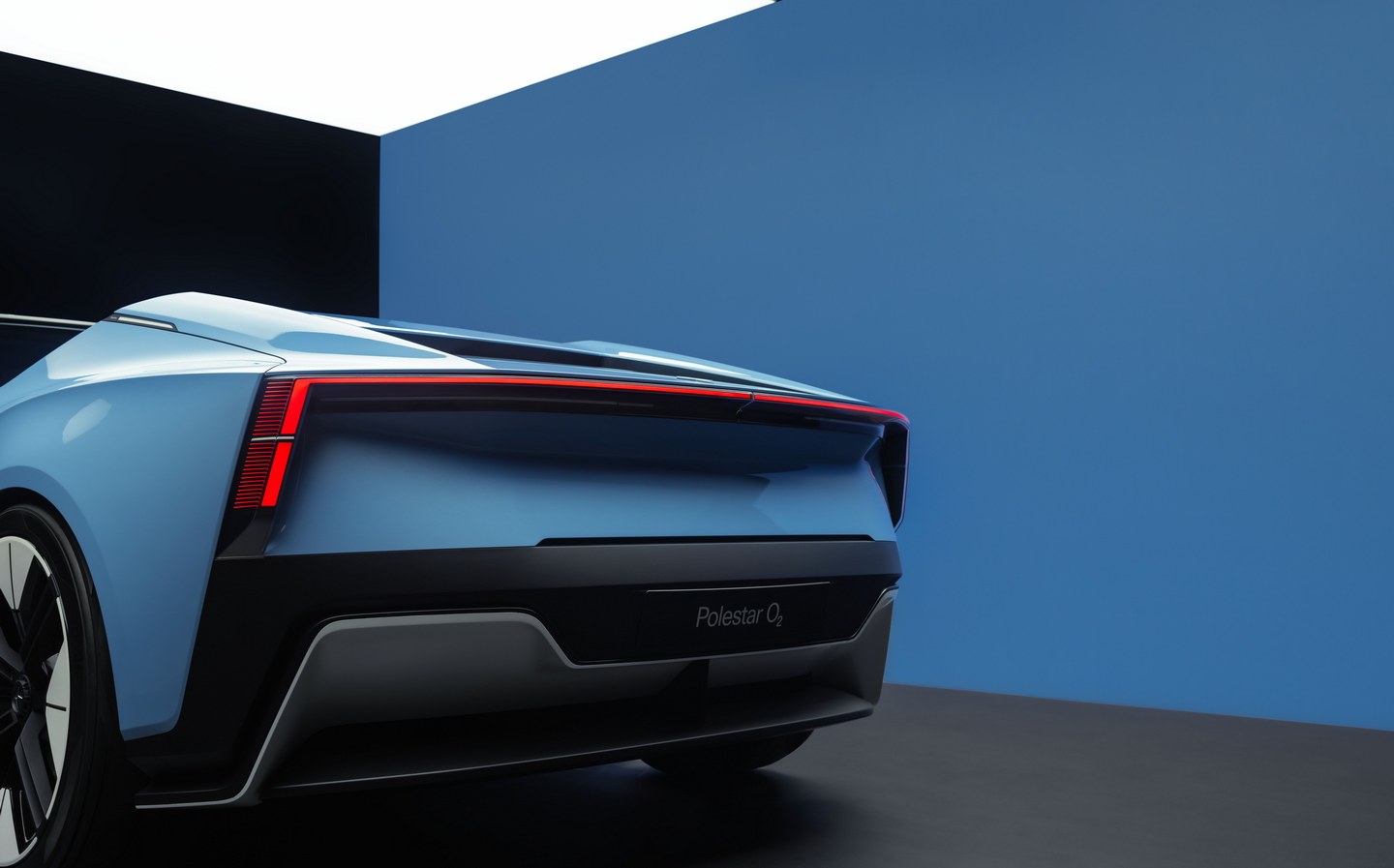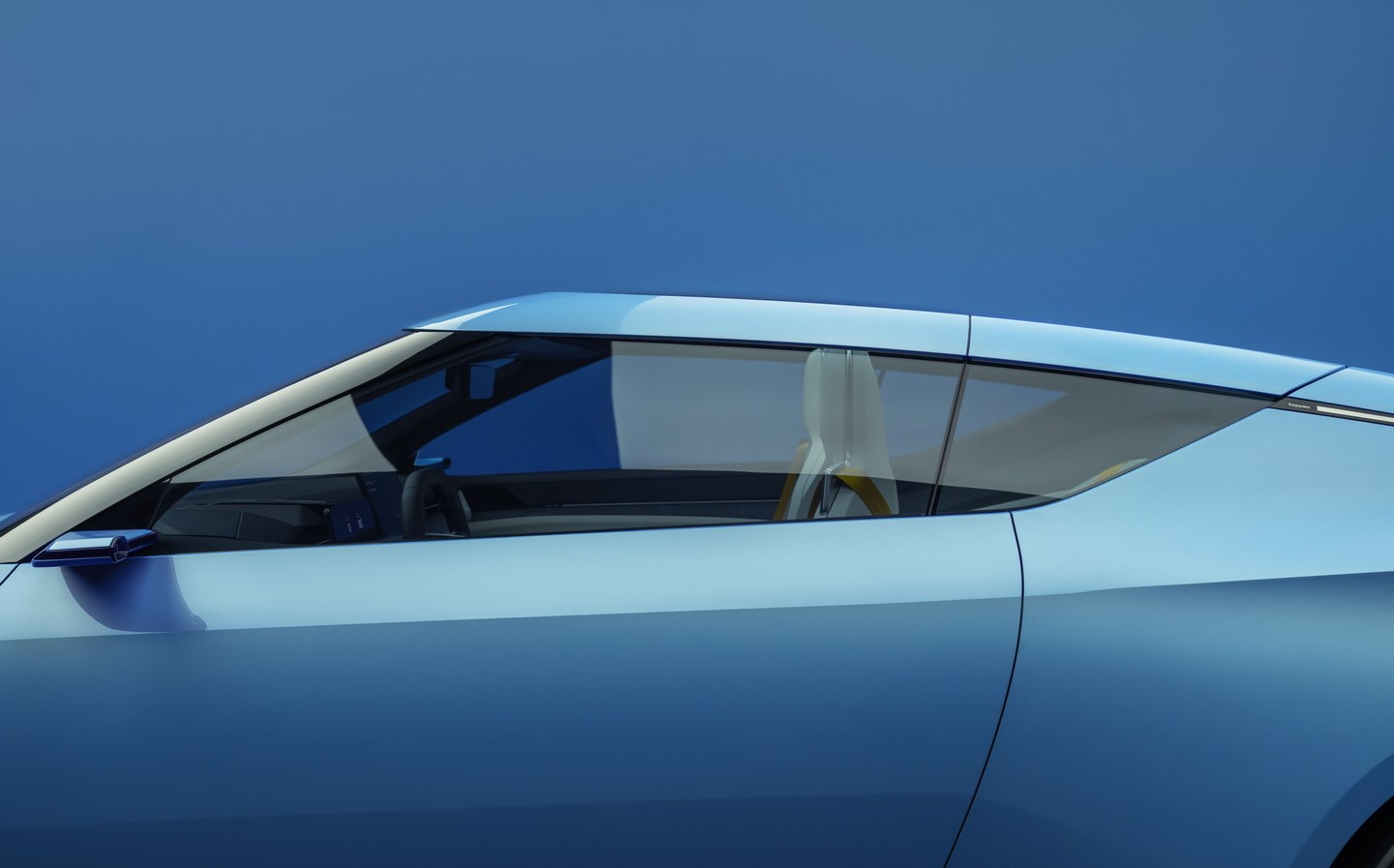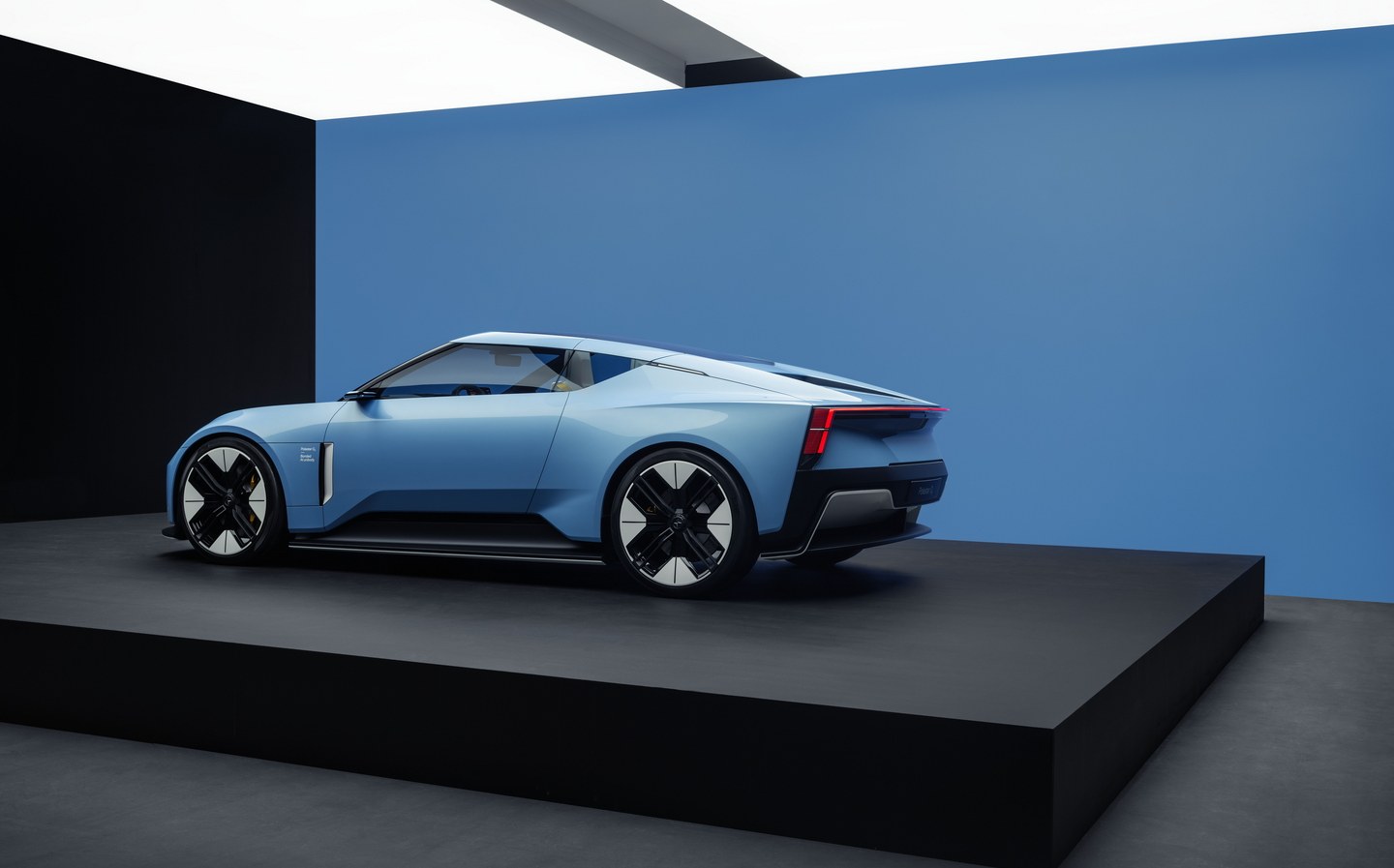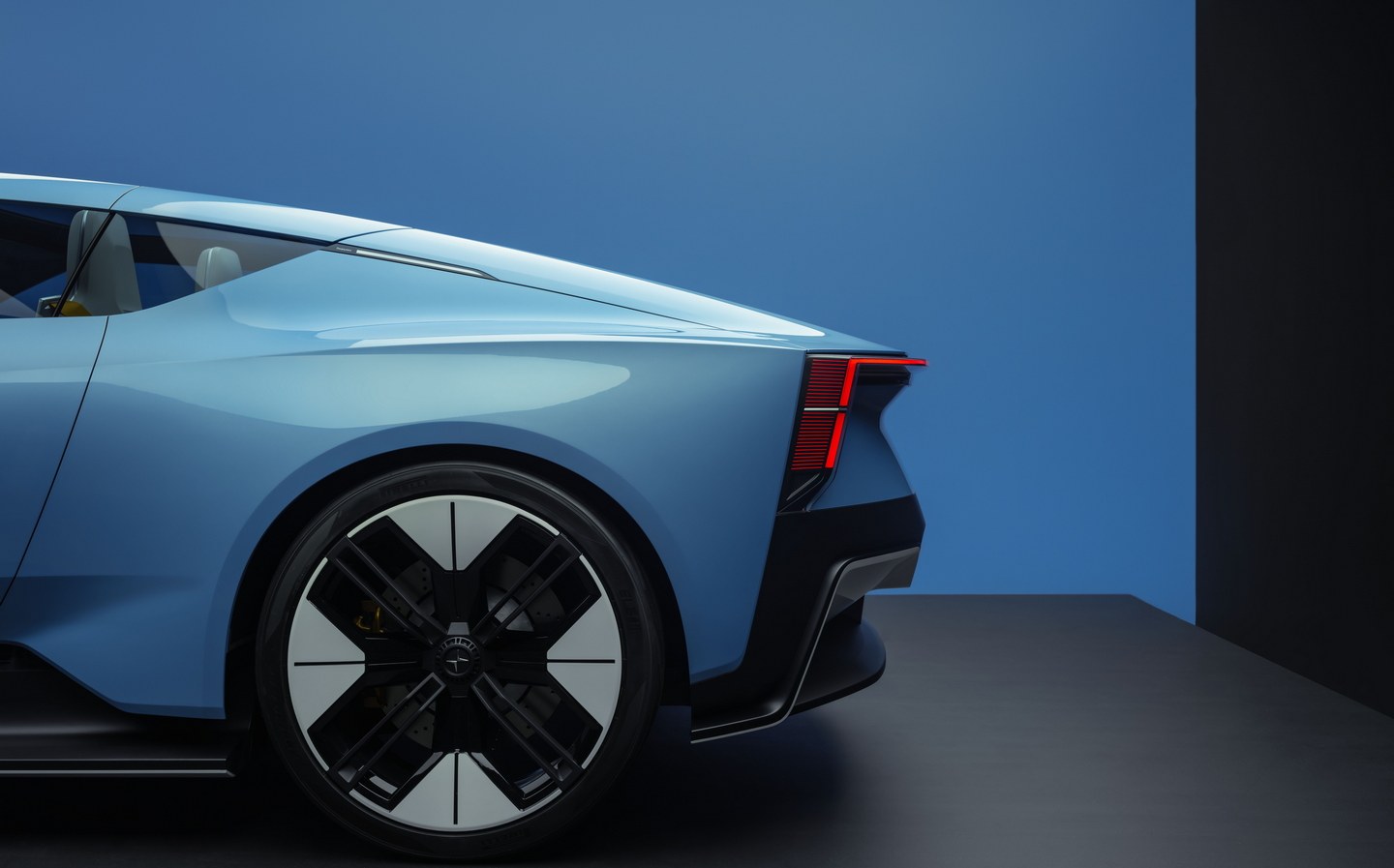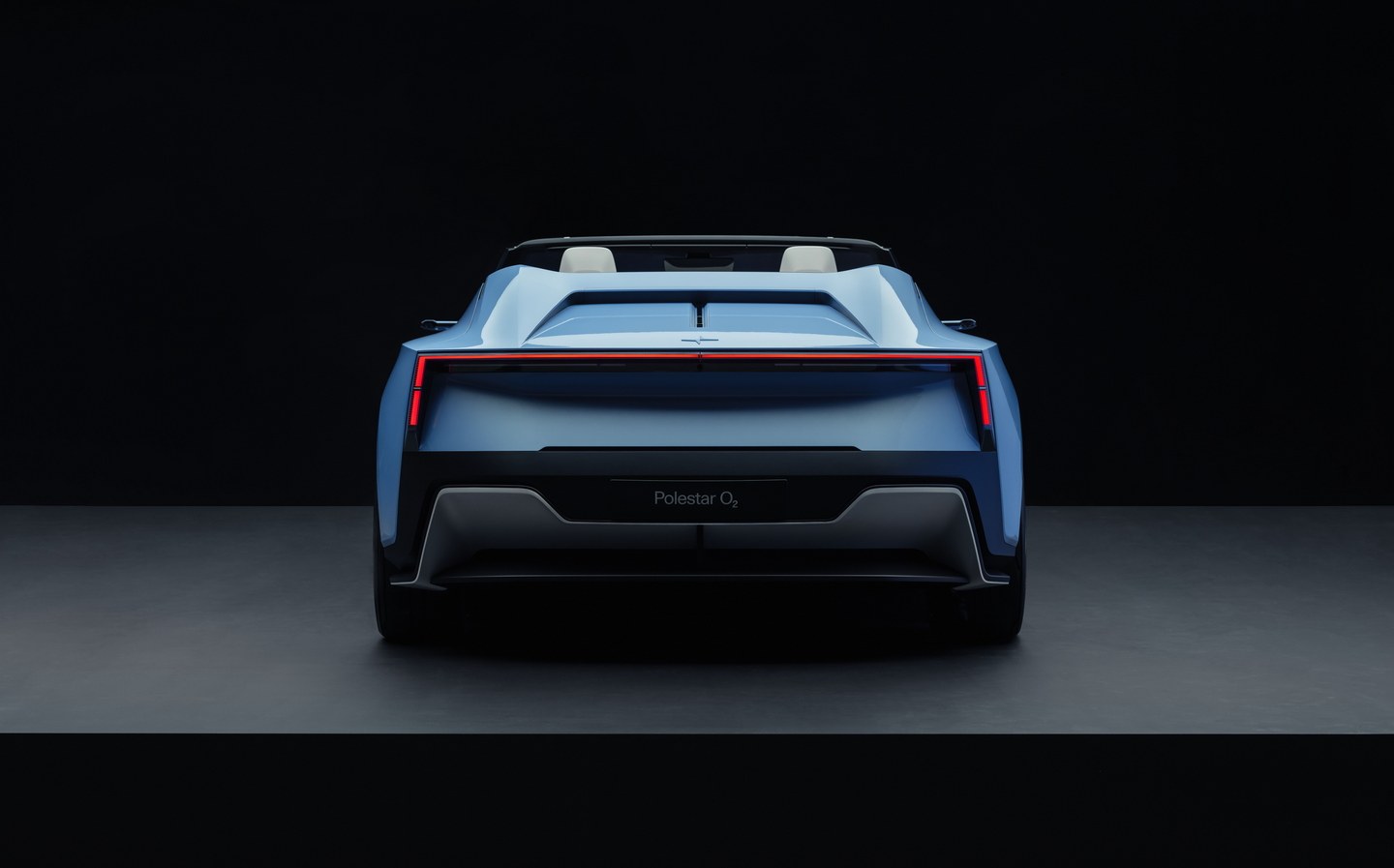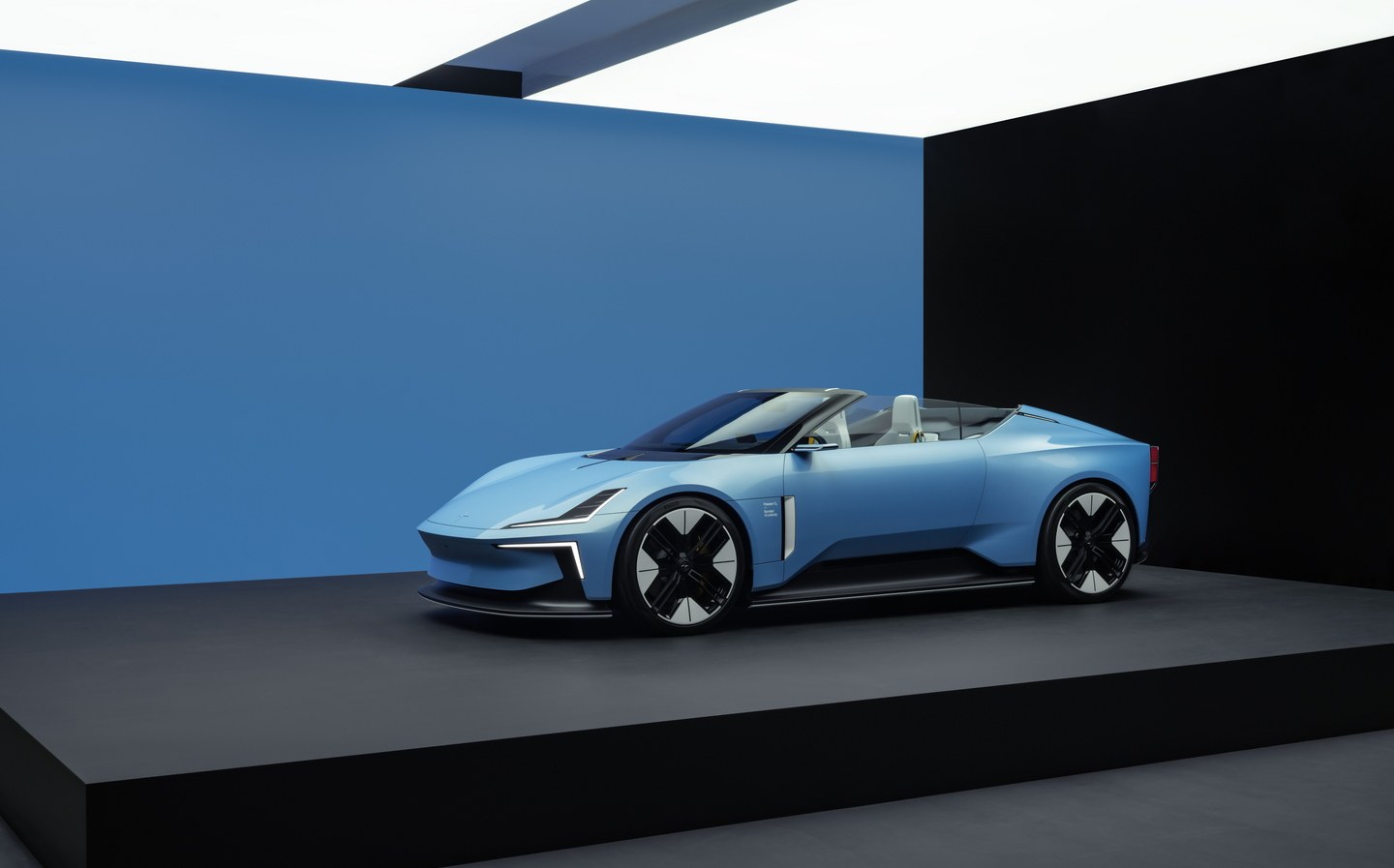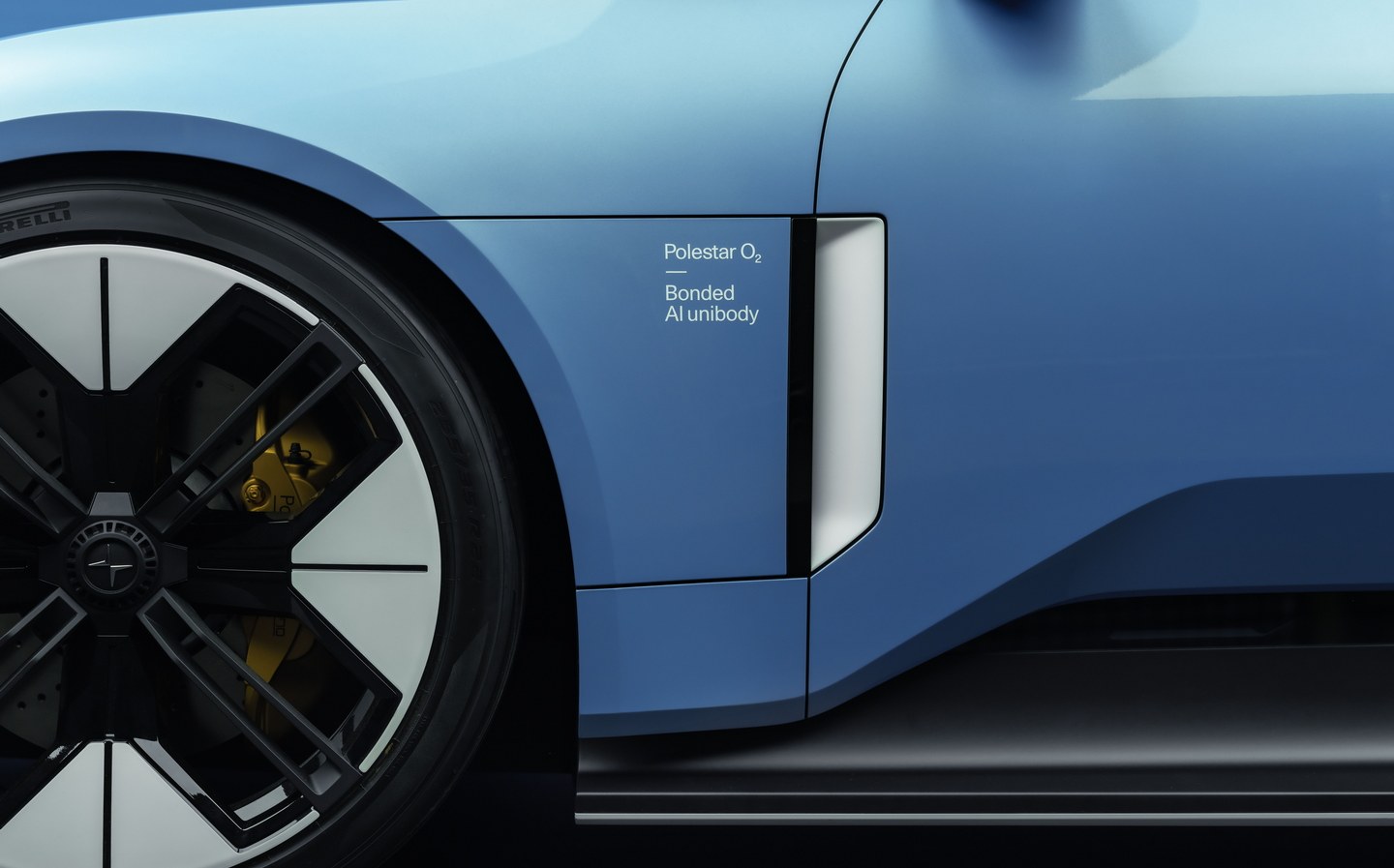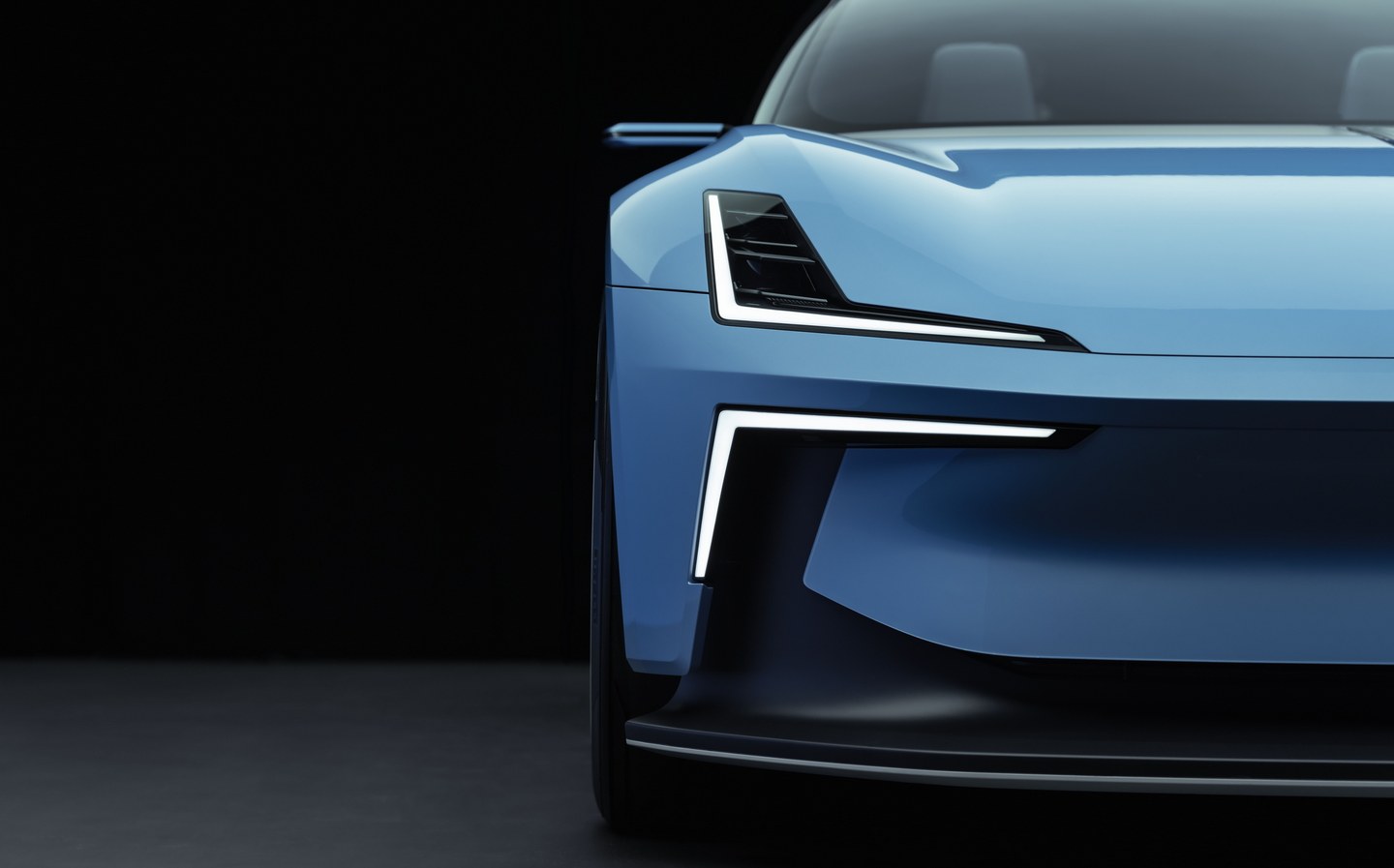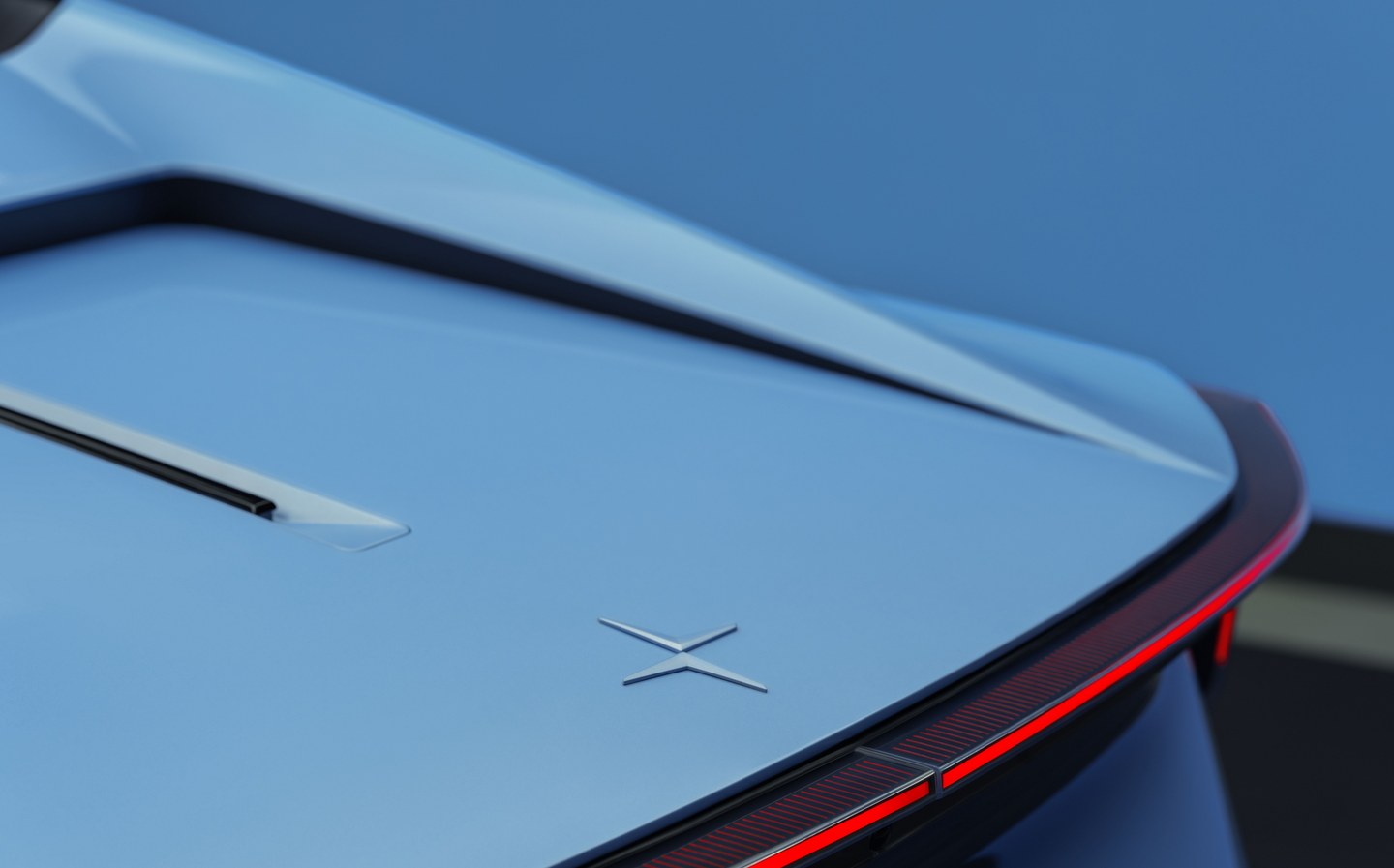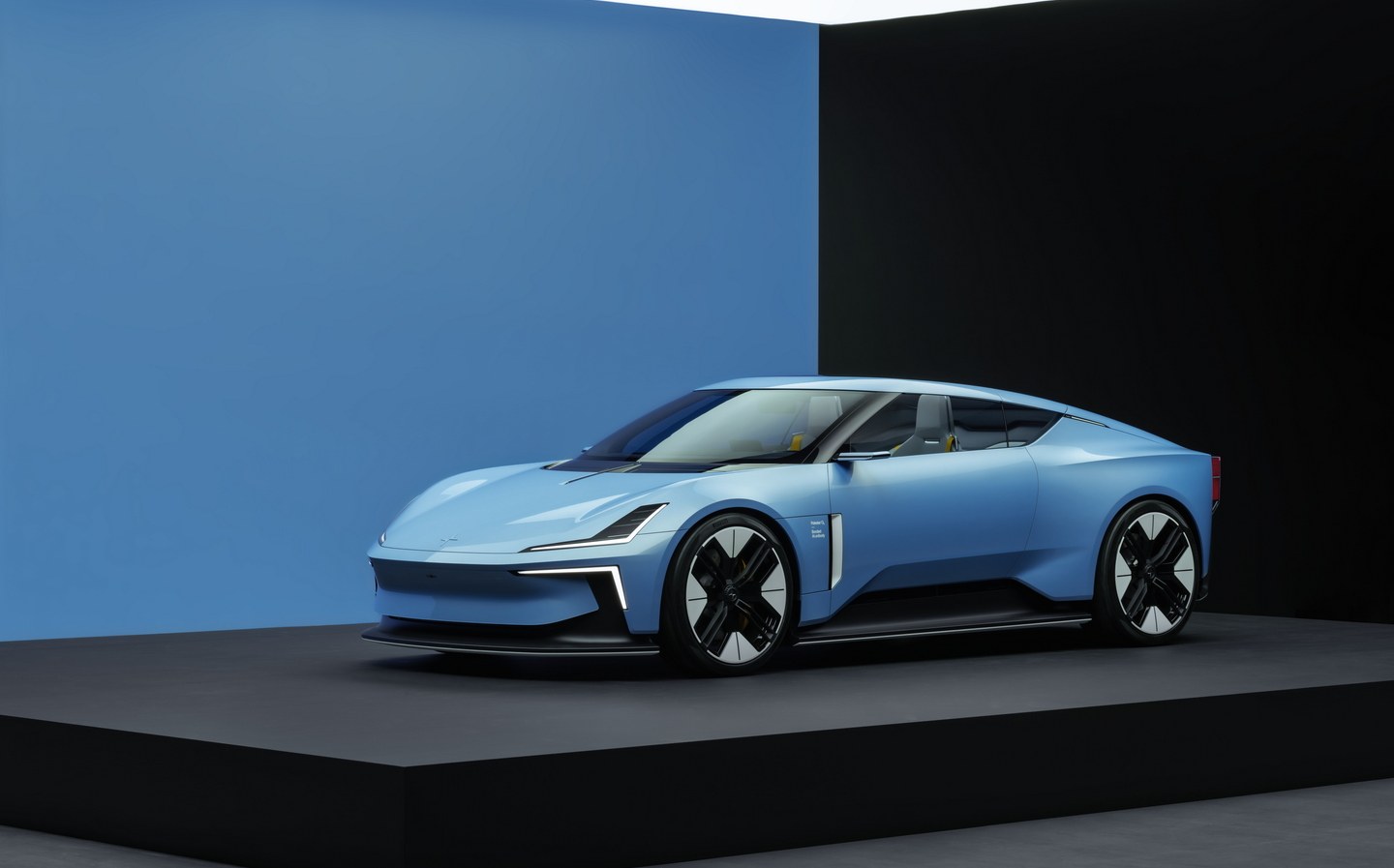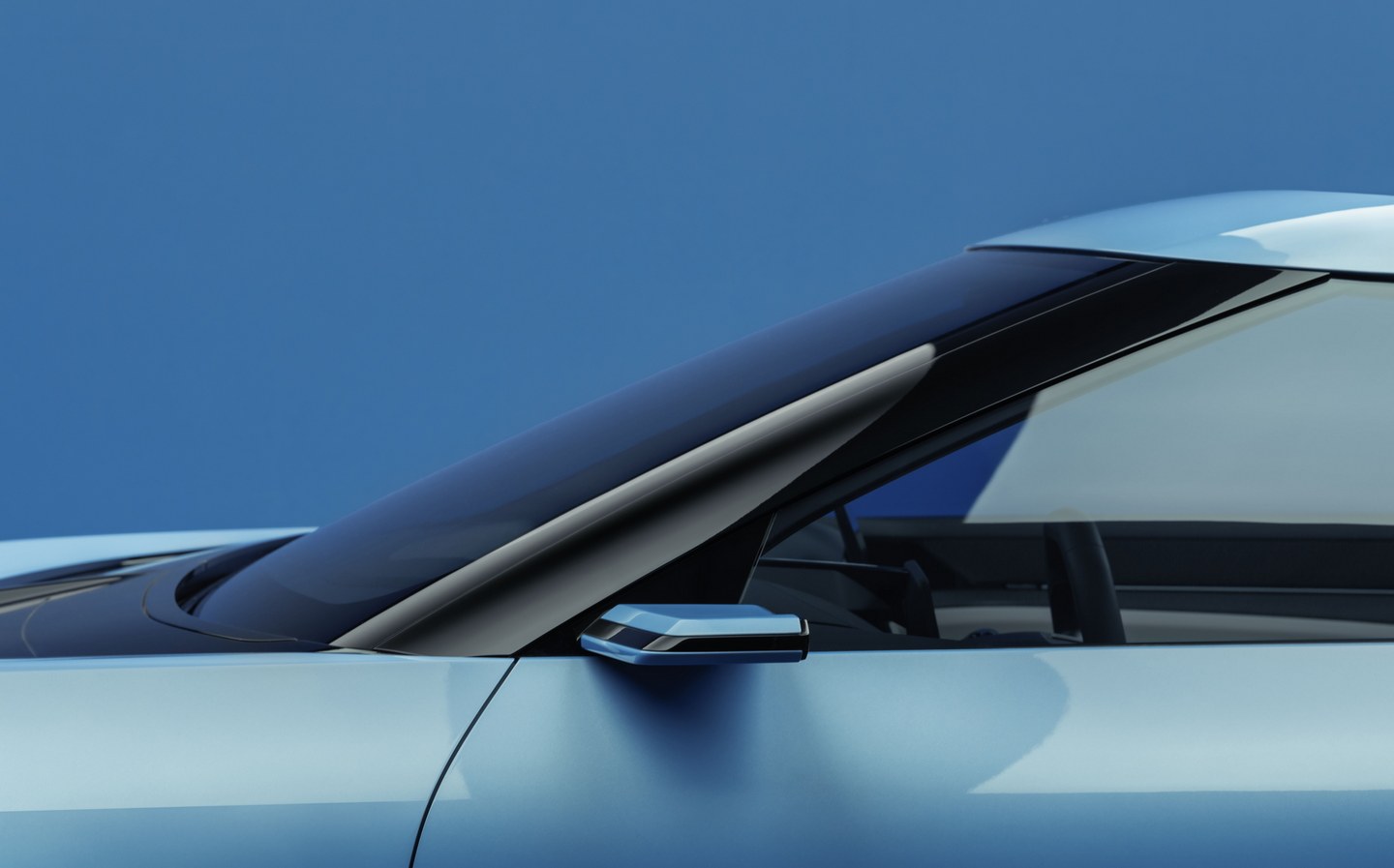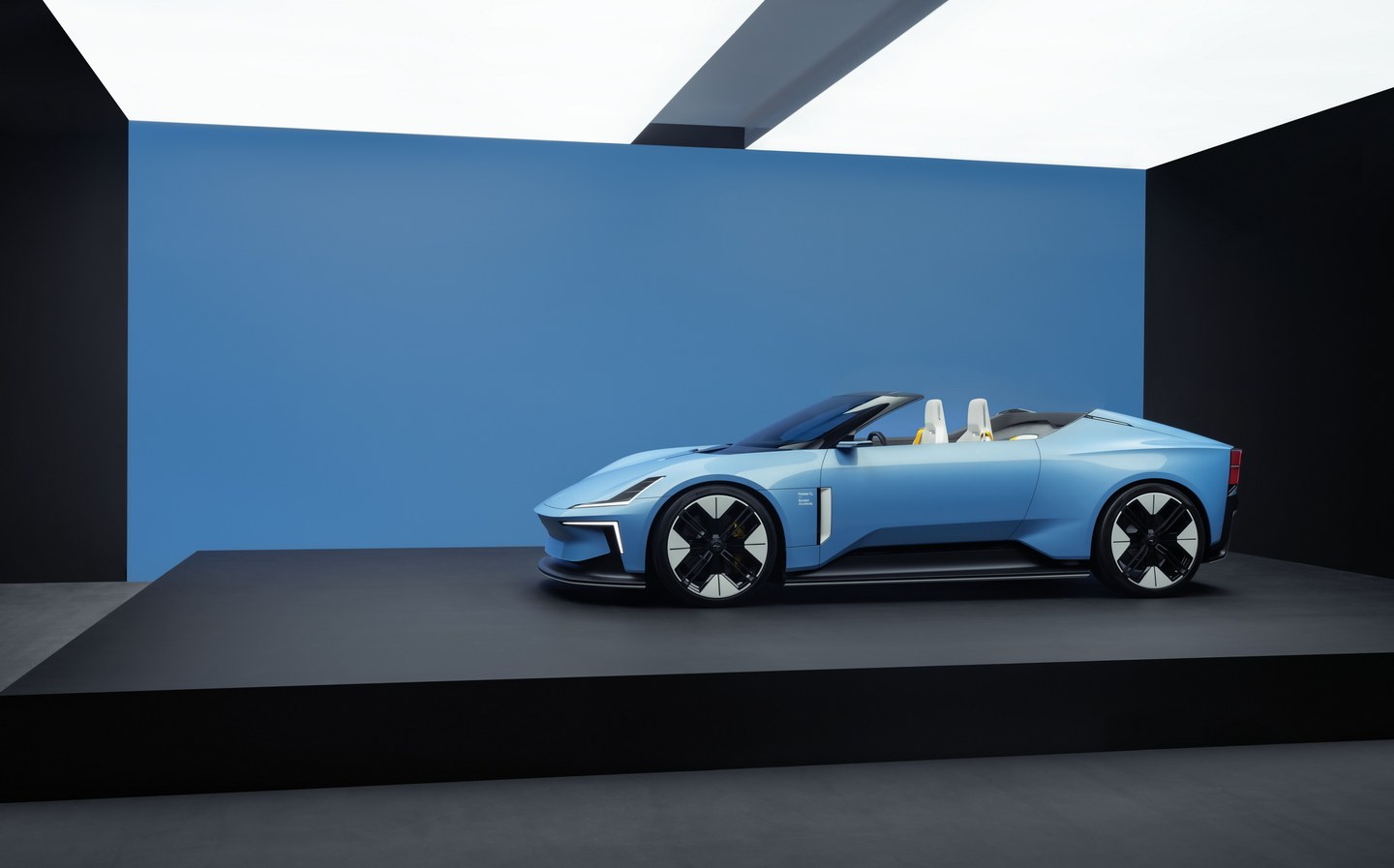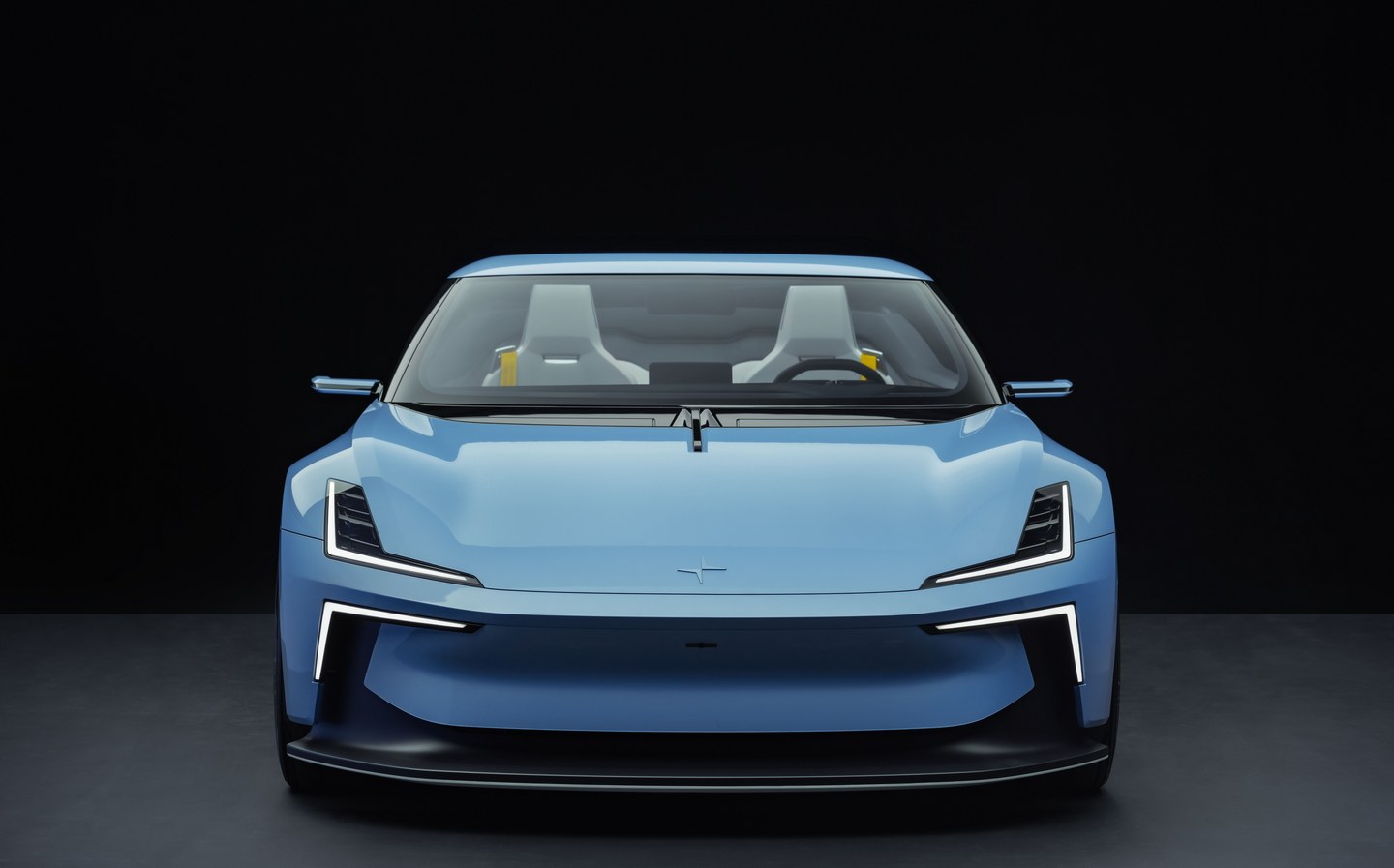Gorgeous Polestar O2 electric convertible will enter production – but will it keep the drone?
Drop-head gorgeous
Sino-Swedish electric car maker Polestar has confirmed that the well-received O2 speedster concept it unveiled in March will officially enter production, going on sale from 2026 as the Polestar 6.
“With the overwhelming consumer and press response, we took the decision to put this stunning roadster into production and I am so excited to make it a reality,” said the company’s CEO, Thomas Ingenlath.
The hard-top convertible, to become a halo car for the brand, will be based on the same lightweight bonded aluminium platform as the Polestar 5 electric saloon due to arrive in 2024, and indeed both cars share a lot of the same design language as the Precept concept from which the Polestar 5 evolved, such as the short overhangs, sharp, low nose and a similar frontal light treatment.
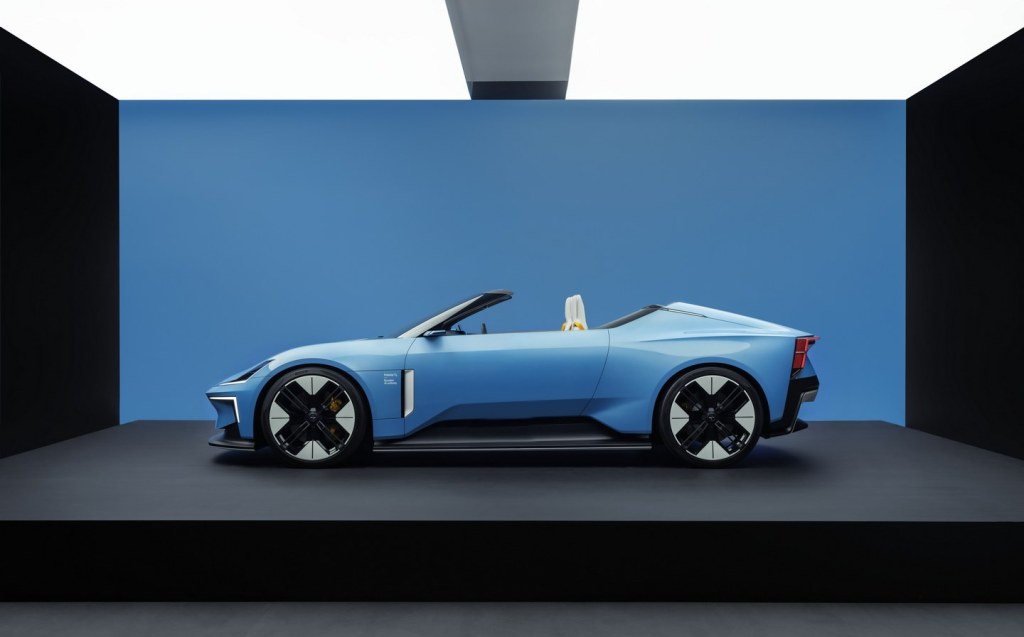
That underpinnings will allow for a range of electric motor and powertrain arrangements, but for now the firm has only mentioned a version with a potential power output of up to 872bhp and 664lb ft of torque from a dual-motor system, giving the Polestar 6 a targeted 0-62mph sprint time of 3.2 seconds.
While they share the same platform and some of the same design features, the Polestar 6 is a lower and wider car than the Polestar 5, with a shallow, raked roofline tailing away towards the rear with buttressing designed to reduce wake turbulence for one of the concept’s headline features — the attached drone.
The drone system that deploys from the rear of the concept car was developed in collaboration with Aerofugia (another company, like Polestar and Volvo, under the Geely umbrella) and the car’s designers have devised an aerofoil that raises behind the rear seat to create an area of calm negative pressure allowing the drone to take off while the car is on the move.
Operating autonomously, the drone can follow the car at speeds of up to 56mph, recording the car and its surroundings such as when driving through scenic terrain or through a particularly challenging set of corners, with the aim of creating a video that can then be edited and uploaded to YouTube via the 15in central display.
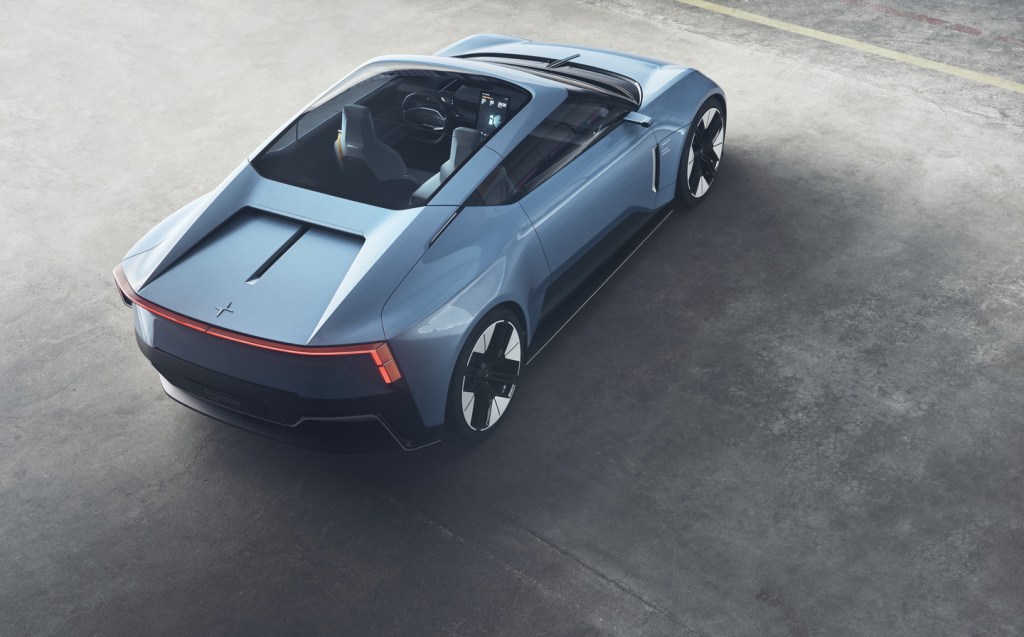
While it may seem like a fanciful prospect and the work of playful tech-happy car designers, Polestar hasn’t entirely ruled out the idea that the drone may make production as a feature of the Polestar 6.
A spokesperson for the firm said that they aren’t currently able to confirm or deny whether a functioning drone will be included as per the concept, saying that if it isn’t included on the Polestar 6 that it’s down to “legislation around use of drones rather than the ability to make it work from a technical point of view”.
“But we haven’t said yes, and we haven’t said no,” they added.
With the O2 concept going on display at Monterey Car Week in California next weekend, the company said that indicative pricing for the Polestar 6 would be in the region of $200,000 (£165,960 at current exchange rates), with local prices to be confirmed closer to the car’s launch in 2026.
Marking the launch will be a limited run of 500 “LA Concept” versions with a similar blue colour, light leather interior and 21in wheels to the original O2 concept unveiled at the Los Angeles auto show last March.
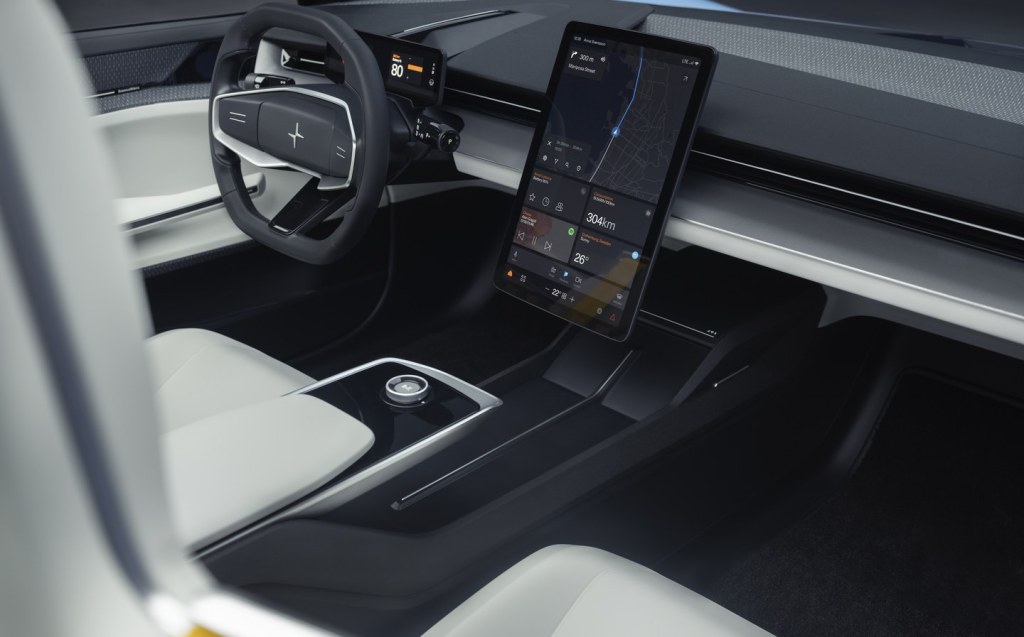
More units of the Polestar 6 will be built following the initial batch of 500 LA Concept cars, but Polestar was unable to confirm numbers, hinting that it won’t be an ultra-low-volume car like the Polestar 1, but also that volumes wouldn’t be as high as the mass-market Polestar 2.
Despite the launch of the Polestar 6 being currently a long way off, reservations for a build slot are already open, with a deposit of $25,000 (£20,745) required to reserve one of the 500 LA Concept editions.
Related articles
- After reading about the new Polestar 6, you might like to check out our review of the Polestar 2
- Take a look a Will Dron’s preview of the 872bhp Polestar 5
- And click here if you want to see our guide to all the car makers’ electric vehicle plans
Latest articles
- Lewis Hamilton wants to design a modern day Ferrari F40 with manual gearbox
- Dacia Bigster 2025 review: The ‘anti-premium’ family SUV that punches above its weight
- Your car’s worn tyres could be being burnt illegally in India, investigation reveals
- Open-top 214mph Aston Martin Vanquish Volante is world’s fastest blow-dry
- F1 2025 calendar and race reports: The new Formula One season as it happens
- Alfa Romeo Junior Ibrida 2025 review: Hybrid power adds an extra string to crossover’s bow
- Top 10 longest-range electric cars: all with over 400 miles per charge (officially)
- Renault 5 Turbo 3E ‘mini supercar’ confirmed with rear in-wheel motors producing 533bhp … and insane levels of torque
- British firm Longbow reveals ‘featherweight’ electric sports cars with 275-mile range


